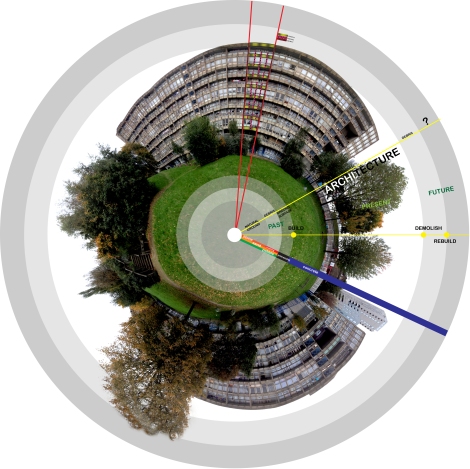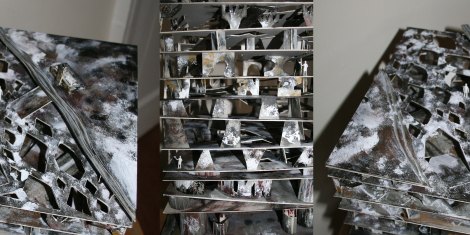My MA Architecture studio at the University of Westminster this semester is based on the hypothesis that architecture, urbanism and geology are deeply interconnected. In creating conditions of habitability, our species has responded to, interfered with, reorganised, transported and reshuffled earth materials to such an extent that new geological conditions have emerged, many of which will play out for thousands, if not millions of years. We have radically transformed the earth’s geomorphology, its surface, its atmosphere and its climate. This amounts to a new geological era that some scientists have called the anthropocene
Large cities are hotspots in this geological transformation, sites where materials that took slow and powerful earth forces millions of years to create have been reterritorialised and intensified and where powerful new geological forces have been unleashed. While buildings appear to be made up of solid matter, they are not. They are dynamic systems of earth materials suspended in space and time that continuously undergo processes of change as they interact with the human world. Humans are part of this mix, also flows of earth materials, mineral assemblages in processes of constant change.
The module is organised into two phases: FIELD INVESTIGATIONS and PROJECTIVE EXPLORATIONS. The first requires that students undertake a research-based investigation and 2d visualisation of one of London’s iconic buildings. They are required to gather and analyse, map and visualise the geological information contained within the building, its site and its material processes. The second phase requires that they develop a design project or other form of multi-media presentation arising from this information. Its objective is the translation and projection of the building as a geological outcrop. The precise medium to be used will be developed in response to the investigation in the first phase.
On 10 October 2012, Diane Clements, editor of The Geology of London (London: The Geologists’ Association, 2010) and paleontologist at the Natural History Museum, visited the lab and spent three hours with us explaining London’s geology through images, maps and samples of rocks and stones she had brought with her. We learned about London’s geological history and about the origins of many of the rocks and earth materials used in the buildings selected by student to study.
FIELD INVESTIGATIONS
For this stage of the module, students gathered, analysed, mapped and visualised the geological processes underway in one of London’s iconic buildings. They explored the building as geology and constructed a picture of its geo-architecture/s. They were asked to think of the building not as a static object, but as a dynamic system of matter in motion i.e of architecture as time and matter. They identified the geologic processes at work in the building, traced them back to their origins and placed them within a speculative geological future. This involved data collection about geological and historical time and processes and their visualisation.
From a provided list, students selected the following buildings to work with:
The Barbican, Battersea Power Station, The British Library, Central Saint Giles, The Cross Rail, Marble Arch, Robin Hood Gardens, The Shard, St Pancras Station, St Paul’s Cathedral, The Tate Modern, Tower Bridge.
The following is a selection of the visualisations produced:
PROJECTIVE EXPLORATIONS
The second phase of the module required that students conceptualise the geological matter and processes studied in the first phase as a pavilion, 25m x 25m x 25m in size, exploring their temporal, material and spatial properties. The following are some of the outcomes of this exploration:













This looks like a great studio would love to see the material both input and output
LikeLike